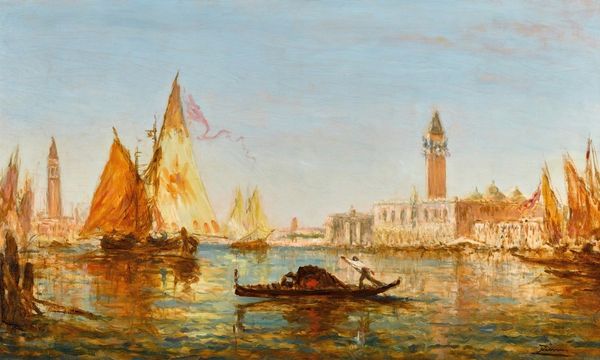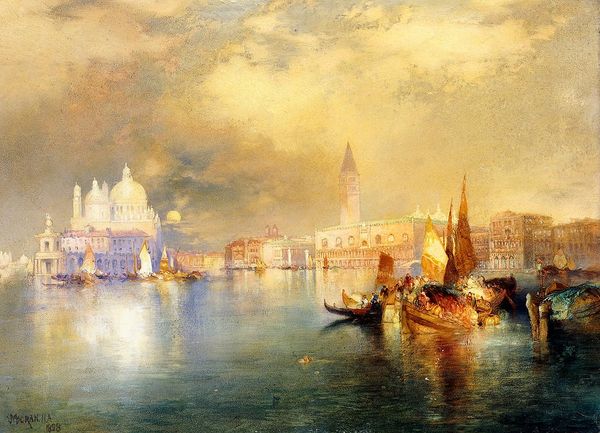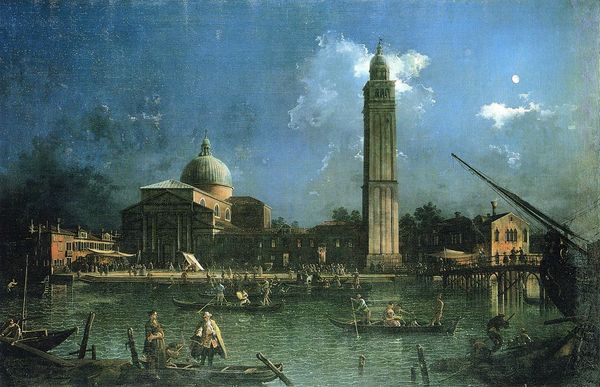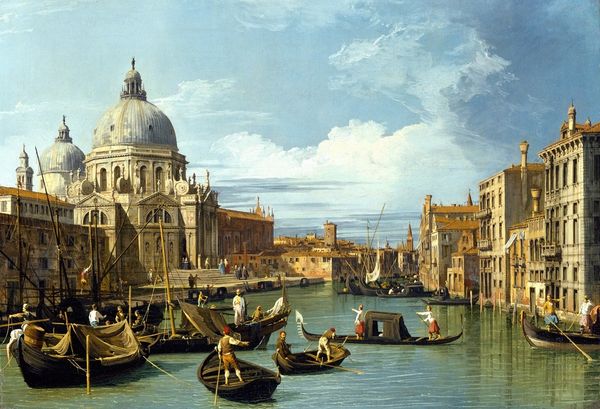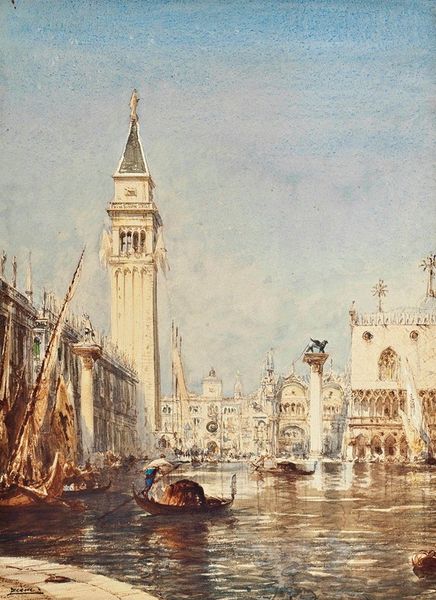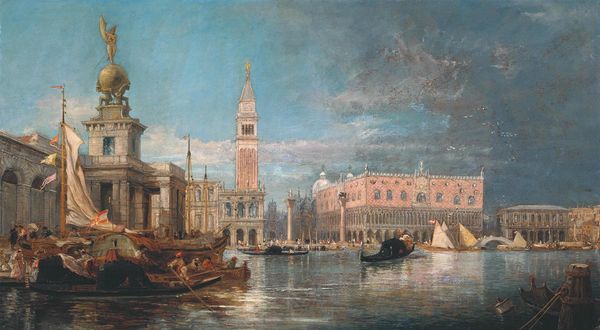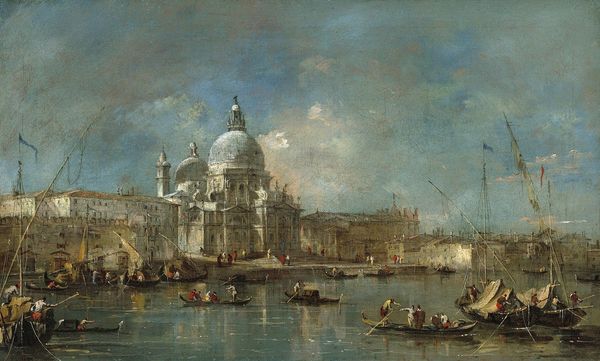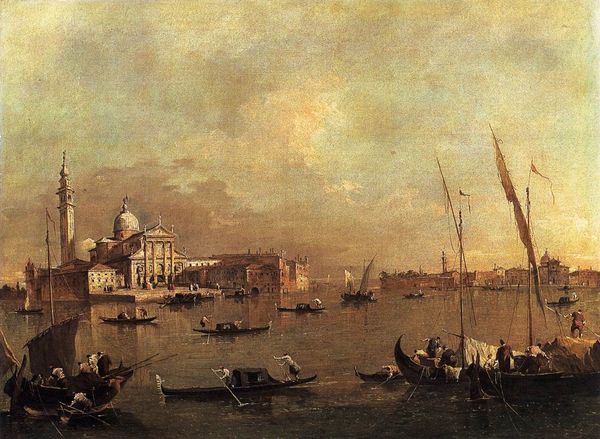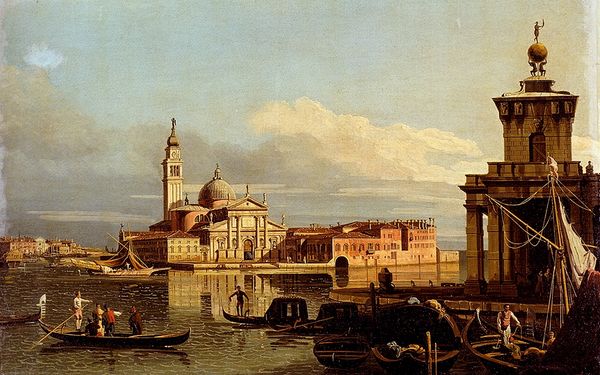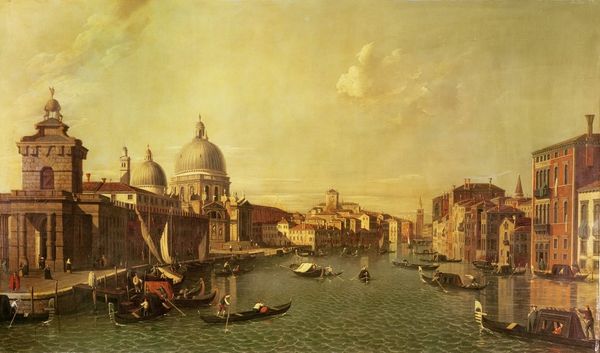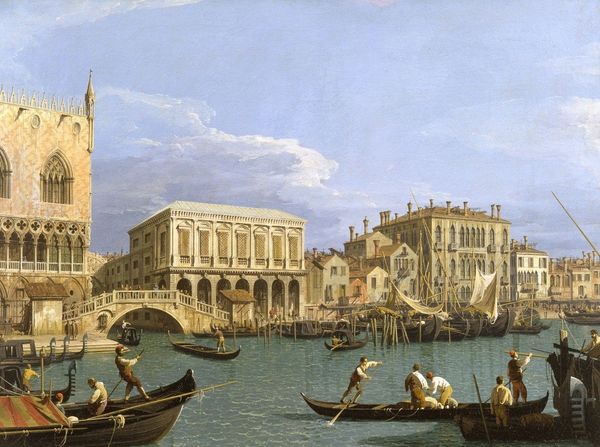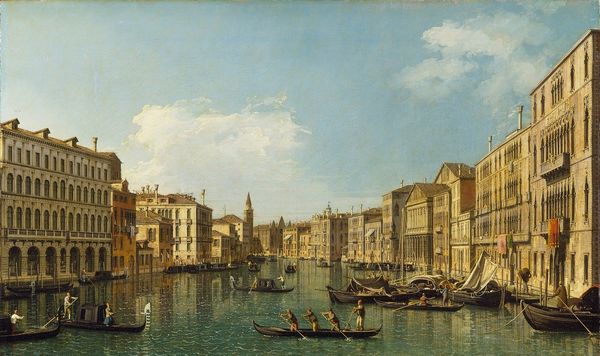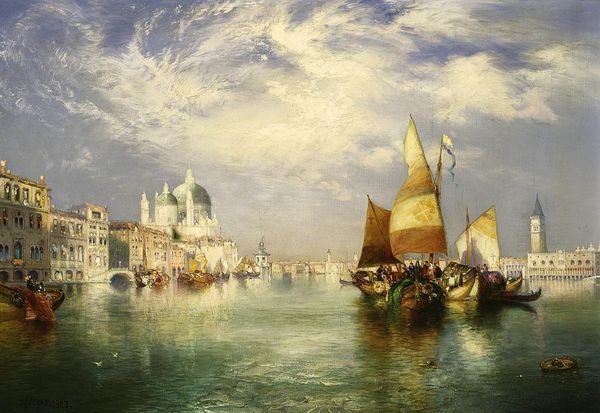
Copyright: Public Domain: Artvee
Curator: J.M.W. Turner captured Venice in a soft, almost dreamlike light in his 1834 painting, "Venice – The Dogana and San Giorgio Maggiore," using oil paints. Editor: My first impression is light and hazy—it's the very definition of luminous, especially around the water. You can almost feel the dampness in the air. But I also find myself thinking about the sheer amount of labour represented in the creation of the boats. Curator: Absolutely. Turner wasn’t simply depicting Venice; he was invoking its spirit. Notice the Dogana, the old customs house with its iconic statue. It speaks volumes about Venice as a center of trade and prosperity. The winged figure is almost like the embodiment of civic pride and aspiration. Editor: Which is constructed through the skilled use of Venetian craft. Someone had to fell those trees, someone had to saw the wood, someone else had to be a very, very competent rope maker. So many artisans represented. Look at the way the sails are rigged on those boats—how long did that take to become proficient in those skills? And the Dogana and San Giorgio, structures predicated upon extracted resources and someone shaping raw matter. Curator: I agree completely, but it's also the ethereal quality— the symbolic dance between light and water that sets this apart. Venice, as a symbol, evokes the fragility and grandeur of human achievement, balanced precariously on the lagoon. Turner heightens the sense of history and mortality. Editor: Yet what about the people? Hard to spot one, especially given the soft-focus on the buildings! The small figures represent countless hours spent labouring within these trade routes, under specific modes of economic production. You can almost smell the tar. Curator: A perfect observation. It's Turner highlighting humanity's fleeting presence, almost swallowed by the city's enduring, iconic identity and the timeless quality of light reflected upon the water, carrying layers of accumulated symbolic meaning across centuries. Editor: Yes. I keep thinking of that tar… how integral this smelly, extracted material was, and is, for maintaining the connection between all of this culture and capital! That connection deserves respect and continued observation.
Comments
No comments
Be the first to comment and join the conversation on the ultimate creative platform.
